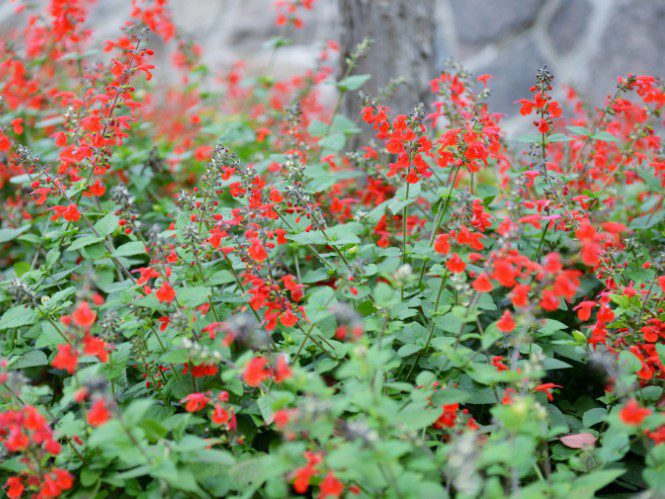Mexican Sage
Mexican Sage Salvia leucantha Growth habit: An upright bushy perennial growing to 4-feet tall. Light:
Plant in the full sun. Water needs: Survives with normal rainfall. Feedings: Apply a balanced fertilizer in February, June, and September. Propagation
Many flower gardeners consider attracting butterflies and hummingbirds a top priority. A key element of creating a green, lush garden oasis is choosing flowering plants that promote diversity.
Mexican bush sage is a great choice for anyone who wants to plant perennial plants that will thrive throughout the year.
How to Plant Mexican Bush Sage
The Mexican bush sage (Salvia leucantha) is a perennial flowering plant that has unique greenish-silver foliage. Bush sage is hardy to USDA zones 7b-10.
However, it can be grown in other areas. Although it can grow to sizes of up to 4 feet (1.22 m.) in its native zones, the plants will be smaller when they are grown as an annual.
However, gardeners will still be rewarded by vibrant red-purple flowers in the late summer and early autumn.
It is easy to learn how and when Mexican bush sage should be planted. You can plant Mexican bush sage at any time during the growing season, but it is best to start planting in the spring.
Mexican bush sage can be grown in many ways by gardeners. These include cuttings, seeds, and transplants. It is possible to find Mexican bush sage plants at garden centers, but it depends on the growing area.
It is vital to purchase plants from a reliable source to ensure healthy new plants.
Mexican Bush Sage Care
Mexican bush sage is easy to care for. Choose a location with full sun that is well-drained and has good drainage. The soil must be rich in nutrients and retain a steady moisture level throughout the growing season.
Mexican bush sage, like many other salvias, does well in water-wise or xeriscape plants. Although this plant can withstand some droughts, it is best to have a regular irrigation schedule.
The plant can become leggy or taller as it grows. You can remedy this by trimming the plant as necessary throughout the summer. Do not remove more than one-third of the plant at once.
After all, flowering has stopped; you can prune the plant with great care. This will enable the plant to prepare for winter and stimulate new growth in spring.
Mexican Sage Details
*Scientific name Salvia leucantha
*Growth Habit: An evergreen perennial that is round and has many arching branches. It can grow to 4 feet in height. The lance-shaped leaves are dark green and can grow approximately 4 inches in length and 1 inch in width.
*Light: Prefers full sun but may also tolerate light shade.
*Water requirements: Water is not essential for drought tolerance; plants thrive on weekly watering.
*Feedings: If necessary, apply a general fertilizer to your garden in March, June, and August. You can substitute a slow-release fertilizer.
*Propagation: Take cuttings and start new plants.
*Ease in culture: Simple.
*Hardiness: Hardy
*Major Problems: Although they may sometimes feed on the leaves, they rarely require control.
*Pruning: Just before new growth starts, give plants a renewed pruning. To encourage branching, pinch back the tips of any new shoots. To prevent stem cracking or limb loss, prune off any old flower heads.
*Uses A beautiful perennial that can be grown for its attractive purple to blue flowers. To attract butterflies, plants can be in full bloom from spring to fall.
You can group several plants in flower gardens for a stand-alone effect or create a lower plant background. They can be used along walkways or in container gardens. You can also add stems of flowers to bouquets.























